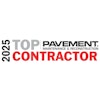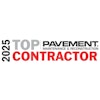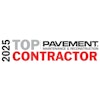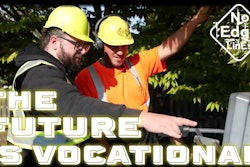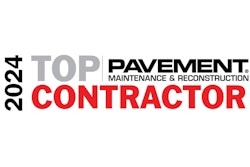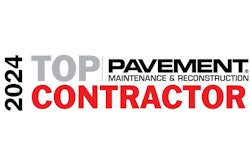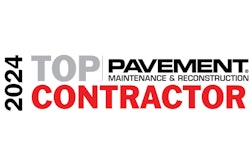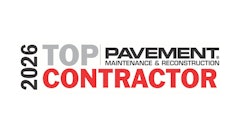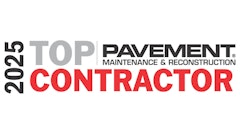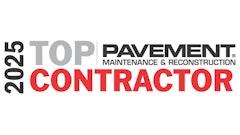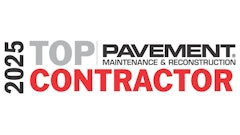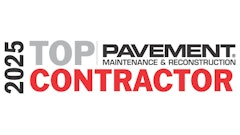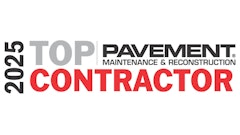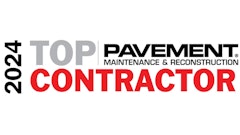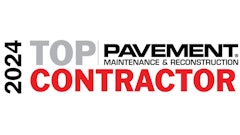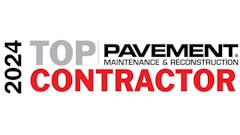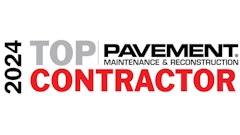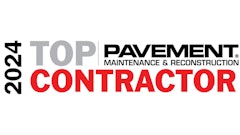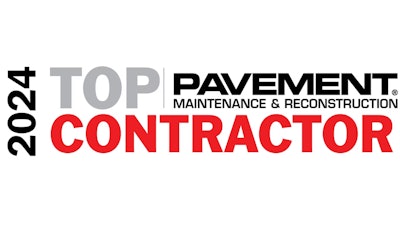
When looking at the numbers by themselves, the sealcoating segment is a bit harder to parse than the paving-only market. For 2024, the sealcoat-only sales total topped off at $152,812,614. That's a dip in sales from last year of $33, 297,910 (or about 18%) from 2023's $186,110,524. However, the apparent contraction takes the figure almost exactly back down to the 2022 total of $150 million, especially when you account for inflation. It erases the growth documented between last year and the year before, but there's a larger trend in the sealcoating-only sales that is somewhat troubling.
- 2015 - $249 (Top 75)
- 2016 - $201 (Top 75)
- 2017 - $112
- 2018 - $171 (Top 75)
- 2019 - $137
- 2020 - $161
- 2021 - $108 (Top 75) [pandemic]
- 2022 - $150
- 2023 - $186
- 2024 - $152
View Top 50 Contractors: Sealcoating
Looking back at the figures for the last decade, ever since the the 2016 ($201 million) and 2015 ($249) sealcoat-only sales totals hit these historic highs, the figures have been steadily decreasing. And it's been doing so at an overall average rate of decline of roughly 22% per year. The ten year trend is contraction. Last year, we wondered if we'd hit a ceiling of growth, on our way back up to the pre-pandemic numbers, but what might have looked like a ceiling of growth could actually be the floor.
While there are dozens of possible reasons and contributing factors as to why this is the case, one external factor could point to a lion's share of the cause. The House introduced H.R. 2576, the TSCA Modernization Act on June 23, 2015. The Energy and Commerce Committee swiftly acted on the bill, and the legislation was passed by a near unanimous vote that very day. A final version of the legislation wouldn't be signed into law for another year, but the writing may have been on the wall.
This legislation impacted the rules restricting the EPA's power to regulate the chemical industry, and for sealcoating, it directly impacted the rules and regulations surrounding the use and production of coal tar sealer, and those sealants that possess PAHs in excess of .1%. The new law didn't constitute a nationwide ban, but has made it easier for states and local governments to pass restrictive measures.
It's important to note that this isn't causality, but a strong correlation. There certainly appears to be a connection to the time in which these legal changes went into place, and the slow decline of the sealcoat-only sales figures. However, there are many viable alternatives to coal tar sealers used in parts of the country that have outright bans in place, so it may be the case that their services are less in demand or that fewer contractors are offering it. Without much more detailed and larger data it's difficult to answer these questions.
Total Sales for the Sealcoating Top 50
Total sales for all the work completed by the 2023 Top 50 Sealcoating contractors was $1,448,374,310 compared to the $1,590,214,734 in total sales in 2023, a much steeper drop of $141,840,424 (or a 9% drop) compared to the relatively small drop the year before of $11 million (or .7%). But of our Top 50 Sealcoating contractors, what is the mix of work they are doing? is it predominantly sealcoating or other work?
The sealcoat sales made up only 11% of the total sales, which is half of what it was last year (22%) and continues its similar downward trend, as well. Even the companies completing the most sealcoating work, are not getting anything near the majority of their sales from it, making it a smaller piece of their business puzzle.
While no company in the Top 50 completed sealcoat work exclusively, there were two outliers who did more than 90% of their sales in sealcoating. This indicates it's the primary or sole area of services they likely provide.
Profit Margins
An interesting parallel between the Sealcoating and Paving Top 50 is how the profit margin distribution mirrored the year before, despite changing the reported ranges. While the highest grouping of contractors did fall into the greater than 20% profit margin range at 17 companies, added together with those in the range of 16-20% profit margins, it is the same figure from 2023's top profit range of, "greater than 15%," standing at 28 total companies.
Twelve contractors reported 10-15% margins, up from 11 the year prior. The same amount reported in the lowest range of profits, at 2 contractors, and this year 8 companies reported falling into the newly establish range of 6-9% profit margins. Trying to gleam some understanding from these margins in conjunction with the trends in total sales and sealcoat-only sales, it appears that while the gross sales amounts appear to be in decline, those completing the work are still making a fair bit of profit from the sector. In fact, the margins could be seen as slightly increasing. One potential explanation for this might be less competition, with steady or minimal growing demand.
Where They Work
While it isn't any surprise that the vast majority of the work mix was in parking lots, there were a total of 6 contractors in the Top 50 Sealcoating that exclusive did all their jobs in parking lots.
- 58% of contractors completed work on residential driveways at an average amount of 9% of total work composition
- 14% of the companies did sealcoating on highways at an average rate of 17% of total work composition
- 100% completed parking lot sealcoating at an average rate of 74% of total work composition
- 72% of contractors did work on residential streets and roads at an average rate of 22% of total work composition
Who Did They Work For
This year municipal work did see a small rise in the clientele mix, but, without a doubt, the commercial and industrial customers dominate the demand for this service.
- 100% of contractors worked for industrial/commercial clients at an average 62% of sales composition
- 80% of the Top 50 worked for municipal customers at an average 14% of sales composition
- 94% worked for multi-family homes/apartment/housing associations at an average rate of 22% of sales
- 52% worked for single-family residential clients at an average rate of 10% of sales
- 92% of the Sealcoating Top 50 completed some work as a subcontractor for someone else at an average rate of 27% of their gross total sales
Fleet Replacement
The number of contractors reporting it would require more than $2 million to replace their total fleet increased by one from last year to 30 companies.
12 companies reported it would require between $1 - $2 million for total replacement, the same as 2023
2 reported between $500,00 - $1 million would be needed, more than the zero last year
5 reported needing less than $500,000 in all, a drop from last year's 9


